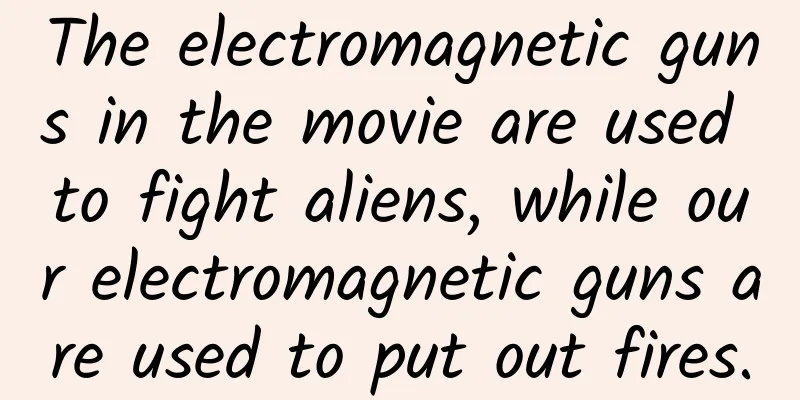Chen Xuelei丨Listen to the "natural sounds" of the universe and explore the mystery of dark matter

|
"Nature's music" is a kind of rhythm of the universe. We want to detect the sound of the Big Bang. Then use it to understand what dark energy is. Chen Xuelei, Researcher at the National Astronomical Observatories of the Chinese Academy of Sciences, Chief Scientist of the Cosmic Dark Matter and Dark Energy Research Group Gezhi Lundao Issue 22 | November 25, 2017, Beijing How did the universe begin? Some friends say that the universe began with a big bang. This was a bold conjecture put forward by some scientists in the last century, and this theory was later confirmed by observation. What is the future of the universe? Since the universe began with the Big Bang, does it have an end? What will the future be like? In fact, the scientists who proposed the Big Bang theory also made some predictions. They assumed that the universe was full of various substances, and then used Einstein's general theory of relativity to predict the fate of the universe. You can see that the picture on the left shows the process of the Big Bang, while the picture on the right shows the prediction for the future. After the Big Bang, the universe has been expanding. Due to the gravitational force of matter, the expansion will gradually slow down. What will happen after it slows down? This depends on the relationship between the amount of matter in it and the initial expansion speed. If the expansion speed is not so fast at the beginning, and there is a lot of matter, then the result is that after it expands to a certain extent, the expansion will slowly slow down, and finally stop expanding when it slows down to a certain extent. Then it will start to shrink again, and after shrinking to a certain extent, it will finally enter a state of "big collapse". What will the universe look like after the Big Crunch? We don’t know yet, because by that time, all the energy and density will be too high to be described by current theories. If the universe expands faster at the beginning and there is not so much matter, it will slow down the expansion of the universe, but the deceleration may not be enough to stop it, so the universe will continue to expand. That is the two images on the right side of this picture - it continues to expand, but the slowdown may not be so obvious. This is the past. Is this how everyone understands the future of the universe? Which of these scenarios is correct? The accelerating expansion of the universe Completed: 10% In the 1980s, some scientists wanted to solve this problem, but they all faced a big difficulty: how can we determine which situation it is? The method is to measure the rate at which the universe is expanding at different times. The picture on the left shows a very common method of measuring speed in daily life. The situation in cosmology is slightly different, but the principle is the same, which is to measure how fast the universe is expanding at different times and then see how its speed changes. Of course, a big problem in cosmology is that we don't know how to measure this distance. Since ancient times, it has been very difficult to understand the distances to celestial bodies. For example, there is a famous fable in our country. It is said that Confucius met two children who were debating: Is the sun closer to us in the morning or at noon? Both children put forward some very good arguments, and Confucius had no way to decide. This is the so-called story of "Two Children Arguing about the Sun". In fact, it is not so easy to measure the distance of a celestial body like the sun, which is relatively close to us. It is even more difficult to measure the distance of a celestial body that is farther away. However, scientists have proposed some methods. One method is to measure the distance through the so-called "standard candle". What is standard candlelight? In the 19th century, in order to study optics, people invented a relatively standard candle. When these candles were lit, the brightness of the light was the same. If you place it at different distances, you can see that the farther the candle is, the dimmer it appears. This is the effect of the standard candlelight. That is, we know its absolute luminous brightness and can measure how bright it appears. By comparing the two, we can know how far away the celestial body is. The question is, do we have such a candle? Scientists have found such a "candle", which is a Type Ia supernova. What is a supernova? There are some dark stars in the sky, and some bright ones. Most of the bright ones are stars that are relatively close to the solar system. Sometimes these stars will suddenly explode - the explosion is often because it has reached the end of its life, or because of its core collapse, or because of the accretion of other matter. In 1054 during the Song Dynasty, people suddenly discovered a star appeared in the daytime. It was very, very bright and could be clearly seen during the day. This star is the famous supernova in 1054. The explosion traces left by it can still be seen in the sky today, which is the so-called Crab Nebula. At its brightest, the supernova explosion can reach 10 billion times the brightness of the sun. On the right side of the picture above, you can see that after a supernova explodes in a galaxy, it is very, very bright. Although it is so bright, it is still difficult to see it at cosmic distances. We need to find such a supernova very far away. Astronomers look for this kind of supernova among the starry sky. There may be a place that is a little brighter, and that bright spot is actually a supernova. There are different kinds of supernovae. One type, called a Type Ia supernova, is a type of supernova that, after some corrections, can be used as a standard candle and can be used to determine distances. Twenty years ago, two competing teams of scientists made an amazing discovery. They originally wanted to measure whether the universe would continue to expand, or whether it would slow down and eventually contract after a certain point. As a result, they found that neither situation was correct. What did they find? The expansion of the universe is accelerating, getting faster and faster. This result caused a sensation around the world, and several scientists who made the greatest contributions also won the Nobel Prize in Physics. The magic of dark energy Completed: 30% This raises a question for us: why is the universe expanding faster and faster? Were the predictions of the Big Bang proponents wrong? Scientists further proposed various theories and finally came to the conclusion that the universe may contain a large amount of dark energy. The ordinary matter that makes up the universe now only accounts for about 5% of our universe. The remaining 95%, more than 95%, is likely to be some matter we don’t know about, of which more than 20% is the so-called dark matter. Although dark matter does not emit light and we cannot see it, we can infer based on its gravitational force that it exists in large quantities in galaxies or galaxy clusters, accounting for more than 20 percent of the universe. Its nature is not difficult to understand, after all, it produces gravity. The properties of this dark energy are very strange. Its effect is to accelerate the expansion of the universe, which is equivalent to a kind of universal repulsion. This is a very magical thing. Because of its magic, we gave it the name "dark energy", but what is it? We actually don't know. With the advent of dark energy, the fate of the universe will undergo a major change, as it will not only expand, but also expand faster and faster. What would happen in such a universe? The picture above shows a possibility, that is, there are many other galaxies around our current galaxy. But if the universe continues to expand like this, and expands faster and faster, there will be fewer and fewer other galaxies because they will all expand far away. After more than 90 billion years, it is very likely that we will be left alone here, without being able to see any galaxies around us. Our universe may end in eternal solitude, staying here forever, but this is only a possibility. Since we don't know what dark energy is, there are other possibilities. It is possible that dark energy will increase. If it increases, it may not only expand other galaxies far away, but our own galaxy may also be pulled apart in the end, and even the earth and our atoms may be pulled apart. This is called the "Big Rip", which is a possibility. In this case, what will the universe look like? We don't know. Another possibility is that this dark energy is now driving the accelerated expansion of the universe, but perhaps one day in the future, it will in turn cause the universe to shrink. This is also a possibility. So all these possibilities exist, and only by solving the mystery of the dark energy of the universe can we answer the fate of the universe. How to solve the mystery of dark energy? Completed: 40% But how to solve this mystery? First of all, we need to have a very precise measurement of it and provide it to people doing theoretical research for analysis. In fact, there are many researchers on this theory. There are probably hundreds of dark energy theories at present. These theories have some theoretical starting points, but none of them have sufficient evidence. So we need observations to solve this problem. But are supernova observations enough? In fact, many scientists have questioned this theory, saying that a supernova is a standard candle, and it has the same brightness when it explodes, or it may not be the same brightness, but after correction it can be regarded as the same brightness. However, perhaps our understanding of supernovae is incomplete, and perhaps there are some strange supernovae that cause us to misunderstand them. Is there such a possibility? Yes, there is such a possibility. Our method is to measure it in as many ways as possible. One of the methods is to use the sound wave oscillation generated during the Big Bang to measure it. Why can sound wave oscillation be used to measure this thing? There is a pond on the left side of the picture above. When raindrops fall on the pond, you will find many circular ripples on the pond. Obviously, the ripples are caused by the raindrops hitting the water. If you look closely, you will see that the ripples are of different sizes. Why are they different? Because the raindrops fall into the water at different times. But if you pour a bucket of water onto the lake, you will find that all the water falls on the water at the same time, and the waves it stirs up are also the same. In this case, all the circles are the same size. If these circles of the same size were mixed together, it would be difficult for us to distinguish them with our naked eyes. If we had a mathematical method to analyze it, we could still see how big these rings have expanded. In this way, we provide a new ruler, a "standard ruler" for cosmic distances to measure the universe. This is another way to measure distances, which can be used to test or even more precisely measure what dark energy is. You may ask, what is "water" in our universe? Water in this case is the distribution of galaxies. In the picture above, we are standing in the center and looking far away. There are a large number of galaxies in the universe. Every point in the picture, whether it is an orange point or a green point, actually represents a galaxy. If you look closely at the distribution of these galaxies, you will find that they are actually irregular, but they seem to imply some kind of regularity, that is, they look like some fibrous structures, but we cannot see anything special about them. If you break it down into different wavelengths, you will find that overall, on a larger scale (on the left side of the above picture), it is higher; on a smaller scale (on the right side of the above picture), it will drop. As it descended, it showed some signs of oscillation. If I remove this whole descending part, you can see there's some oscillation in the little inset in the middle. The scale of this oscillation tells us the different distance scales of the universe. With it, we can understand the distance of the universe and how it is expanding. This method is used to obtain the above figure, in which the gray line represents the original observations made using supernovae, and the blue line represents the observations measured using this method. You will find that the blue lines are all above the gray ones. These are observations from a few years ago, and the data is constantly changing. However, the distances of supernovae and those measured using this sound wave oscillation method are not completely consistent. Is this inconsistency simply caused by errors, or does it have a deeper meaning? We don’t understand it yet and more precise observations are needed. The international community regards dark energy as a very important scientific issue at present, and there are many experiments to measure it. This includes satellites that will be launched in the future, such as the Euclid satellite and the WFIRST satellite, as well as upgrading some large ground-based telescopes for observations, but most of these observations are in the optical band. This also causes a problem. We cannot see dark energy, and all the observations we make are based on many assumptions. Since optical observations show the same stars, could it be that there are some effects we don't understand that are deceiving us? Radio observations, also known as radio observations, provide another perspective. The image above shows a galaxy as seen optically (left) and the same galaxy as seen using radio waves (right). What can we see in the radio band, or radio band? In fact, the most abundant element in the universe - not in dark matter and dark energy - but in ordinary matter is hydrogen, because hydrogen was formed in the Big Bang. This hydrogen element will produce radiation with a wavelength of 21 cm. The wavelength of 21 cm is actually a kind of microwave, and this microwave radiation can be detected. If you measure the intensity of this radiation, you can see how the neutral hydrogen, or hydrogen atoms, are distributed in the galaxy. Here we show a hydrogen atom in a galaxy, and we hope to propose a new method, namely microwave or radio method, to conduct such observations. Of course, this observation is also very difficult. The picture on the left shows the Arecibo telescope in the United States. Its diameter is 300 meters. In the past few decades, it has been the world's number one radio telescope. In the right picture, you can see that there are many blue dots that are optical observations, and red dots that are radio observations. You will find that there are fewer red dots and the distance is not very far. In fact, it means that its sensitivity is still worse than that of optics. So, can we see farther if we have a better telescope? Our country has built the world's largest single-dish telescope, FAST. Mr. Nan Rendong, the designer of FAST, has passed away. In 2006, Mr. Nan Rendong proposed to develop FAST, and he also suggested using FAST to conduct cosmological research. Although FAST has improved its sensitivity, its viewing distance is still limited. Moreover, although FAST is already very large, it is still not very clear when looking at galaxies. Will this have any impact? Later, I thought about it carefully and found that the problem was not serious. Each dot in the above picture represents a galaxy. If we look at the entire galaxy, if our resolution is not enough, we cannot see individual galaxies. They are all mixed together, resulting in the picture below. Although we cannot see individual galaxies, we can see how they are distributed as a whole. This method can further increase sensitivity and allow us to see the more distant universe. Moreover, in addition to the research that FAST itself can do in this area, the development of specialized telescopes may be able to achieve better detection at a lower cost. Listen to the rhythm of the universe Completed: 60% This led to the proposal of the "Tianlai Project". At this time, many people abroad also came up with the same idea, so we formed the "Tianlai Alliance". The word "heavenly sound" comes from Zhuangzi, who mentioned "heavenly sound, earthly sound, and human sound" in "On the Equality of Things". "Earthly sound" is like the sound of wind blowing through the valley. "Human sound" is like the sound of people playing musical instruments. What is the sound of nature? "The sound of nature" is a kind of rhythm of the universe. We want to detect the sound produced by the Big Bang and use it to understand what dark energy is. So far, there are many experiments around the world trying to produce neutral hydrogen at cosmic distances, but no one has been able to do it. Why? Because if you look at the neutral hydrogen in the distant universe, you can see the signal produced by the neutral hydrogen at the end of the picture on our left. In front of it is a very strong bright light, which comes from the Milky Way, which is the foreground of the Milky Way shown in the right picture. The foreground radiation of the Milky Way is about 100,000 times stronger than the 21 cm signal. So if we want to see this 21 cm signal, it's like we want to see stars during the day. The stars are there, but they are buried in the sunlight scattered by the atmosphere. This thing must be reduced by very precise means in order to see this signal. So can it be reduced? Fortunately, nature still gives us a chance. Because the synchrotron radiation, or foreground radiation, produced by the Milky Way has a very smooth spectrum, which looks very smooth, a straight line, or a slightly curved smooth curve. After subtracting this, the distribution of hydrogen atoms will be revealed, resulting in changes in the intensity of the 21 cm radiation. So in principle it can be done, but it requires very sophisticated instruments and complex data processing. After receiving support for the project in 2012, we started relevant research and set up small antennas in Xinglong and Inner Mongolia to conduct experiments in this area. We also need to choose the best site, because the radio signals generated by astronomy are very weak, while ground-based devices such as radar, television, and mobile phones will generate strong interference signals, and we must avoid these interference signals. How can we find the place with the least interference signal? Of course, the sparser the population, the less signal will be generated. It would be best if there were some mountains around to block it. However, if we go to an uninhabited area or an island, there is also a problem, which is that we still need to provide electricity, communications, roads, etc. This is a comprehensive issue. We have selected a large number of sites across the country and visited more than 100 locations. As you can see from the site distribution, many are located in Inner Mongolia. We initially wanted to look for it in Inner Mongolia because it is very close to Beijing, which makes it more convenient for us to conduct experiments. But unfortunately, we later discovered that although Inner Mongolia is sparsely populated, the terrain is too flat, with endless grasslands that allow radio waves to be transmitted, so the interference is still very serious. This picture is of the vicinity of the FAST telescope. We have also done site selection. You can see that those green ones are some small flat areas we found through remote sensing maps. In addition, we also selected many places in Qinghai, Tibet and Xinjiang. It was very tiring for us to travel to these places, but it was also very interesting, and we saw many situations that are not easy to see in normal times. We finally gave up on building FAST in Pingtang, Guizhou, because the mountain there is very steep, extremely steep. We can walk inside with our equipment, and there is flat land inside, but it is more difficult for vehicles to cross the mountain, and we need to blast the mountain and build a road. This is possible for a large telescope like FAST, but for the small experiments we did at the beginning, the cost was too high and the cycle was too long, so we gave up. Finally we went to Xinjiang, and we visited dozens of locations in Xinjiang. This is the last place we found, Barkol in Xinjiang. It is located in the eastern part of Xinjiang and is a small town on the Silk Road. If you have a chance, you can go and have a look. It is very beautiful. Next to the city are snow-capped mountains, and there are also "beacon towers" left over from the Han and Tang dynasties. The conditions in this place are very difficult, but the advantage is that it is indeed sparsely populated. The station we finally chose is 160 kilometers away from the small town I just mentioned. There are very few people there, and we would occasionally run into some herdsmen, camels and sheep. We carried out construction locally, and many colleagues and classmates made arduous efforts during the construction process. The picture shows us installing the antenna. If it snows in winter, it is very difficult to do this work. At that time, several of our colleagues walked several kilometers to enter the place for maintenance and testing. The one on the lower right who looks like a migrant worker is Wu Fengquan, an associate researcher in our group. He has written many papers. He is also a versatile person who can drive a forklift, repair a forklift, and build various things for us. At that time, it was difficult to go in for maintenance, so he brought a few naan in. In the summer, there were some wild sand onions on our site, so he picked a few sand onions, washed them with water, and ate them with naan. I am very pleased that our colleagues and classmates did not count their own efforts, but worked together to build this. This is the telescope array we have built now - the Tianlai Array. The circular ones in front are called disc-shaped arrays, and the ones in the back are called cylindrical arrays. You may wonder why we have two types of formations. In fact, there is some debate about which one is more advantageous. Let's find out through comparison. This is another photo of the column array. This is our station building. It’s quite cold there in winter. We achieved the first light observation last year. As you can see, the right side is the sky map we produced with first-light observations, and the left side corresponds to the sky map previously measured by other telescopes. We are only doing a preliminary test now, so this is still a less sensitive result. You will see that some of the things on the left celestial map can also be seen on the right, but there are also some things on the right that are not on the left. Some of these are caused by moving sources, such as the sun, and some are just illusions in the preliminary results that can be removed through further mathematical processing. Our next step is to study how to process it and get a better image. If we are successful in the end, we will have to expand this array to carry out the entire observation. If successful, we would have very good constraints on models of dark energy and might even be able to detect whether dark energy is changing as the Universe expands. Why do we need to do the Tianlai experiment? In fact, this experiment is controversial, and many people may not completely agree with my point of view, but why should I do this experiment? Can I publish more papers? Actually not, because when I was doing theoretical work, I could write a paper quickly just by using my brain, but this requires spending a lot of time on experimental work. Is it easier to produce results? Of course not. In fact, this work has not been successful yet in the world, and everyone is still exploring. Is success guaranteed? We can't guarantee it because some 21-centimeter experiments have been going on for more than ten years, and there are still no results. We are trying this thing now, and we don't know when we will succeed. But why should I do it? Because I feel very lucky that it gives me a chance to explore the universe and discover new things. Before 2015, people saw gravitational waves for the first time, which shocked the world. However, after the gravitational waves were proposed, it took nearly a hundred years of attempts. People started conducting experiments in the 1960s, and until now, after decades of attempts by many generations, such detection has finally been achieved. In fact, I used to think that it was very likely that our experiment would succeed before gravitational waves, but now gravitational waves have been successful and we have not yet succeeded. However, I believe that sooner or later we will succeed too! - END - The articles and speeches only represent the author’s views and do not represent the position of the Gezhi Lundao Forum. |
<<: No New Year's Eve in 2022? It will be absent for the next five years
Recommend
Mazda, the BMW of Japan, may still have a chance to save itself in fuel vehicles
Mazda is known as the BMW of Japan. But when BMW ...
Android touch events (notes)
There are not many articles with similar titles o...
Why is it said that Win 10 system cannot achieve 1 billion installations?
At last year's Build developer conference, Ter...
Creative comics: The journey of a seed
Seed industry is the "chip" of agricult...
The "green" wind of future travel: What kind of sparks will be created when wind meets electric vehicles?
Your browser does not support the video tag Autho...
How much does it cost to be a Hami mobile mini program agent? What is the quote for Hami mobile mini program agent?
Hami mobile app agents are generally divided into...
Be careful! A poison that can kill you with just 1 mg may be in your kitchen!
Fermented foods are loved by people for their uni...
How to build a user tag system from 0-1?
With the disappearance of traffic dividends, the ...
AMD will launch a low-cost VR graphics card to lower the threshold for VR experience
[[167050]] Beijing time, June 1 morning news, AMD...
Having spent 1.6 billion on advertising in three years, how long can Nezha Auto, which exchanges profits for traffic, last?
In the first few days of July, domestic new energ...
Can foodies eat up all the invasive species? Don't overestimate the ability of foodies
Recently, the topic of invasive species has frequ...
How to eliminate inferior products and retain superior ones in APP promotion channel monitoring
Many startups are interested in trying to discove...
Case | Advertising strategy for online training of fire protection engineers!
With the rapid development of society, the scale ...
Detailed explanation of the latest Apple developer account registration process!
For the latest operating procedures in 2016, plea...
Is it expensive to join the Hami Underwear Mini Program? List of franchise fees for Hami Underwear Mini Program
For entrepreneurs, although mini program developm...









